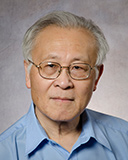You may ask why a basic scientist and non-surgeon has a place on the Hall of Fame page for the Division of Plastic, Reconstructive & Aesthetic Surgery.
Cho Y. Pang emigrated from Hong Kong as a young man and obtained his PhD training in Winnipeg, then worked at Yale and Texas before joining the Surgical Research Department at the Hospital for Sick Children in 1982 having been recruited by Dr. W. K. Lindsay.
His primary focus was and continues to be the pathophysiology of disorders of the microcirculation of skin and muscle and this has been the common thread throughout his 30 plus year odyssey in the world of plastic surgery research. His original work was focused on improving random pattern skin flap survival utilizing ways of pharmacologically mimicking the “delay” technique. Dr. Pang was the first to describe the phenomenon of ischemic preconditioning of skin and muscle in ways of preventing damage through ischemia-reperfusion injury. He was the first to use isolated in-vitro perfusion techniques in human skin and muscle to investigate the pathophysiology of ischemia reperfusion injury. Throughout his career he has been highly successful in maintaining a constant stream of peer reviewed funding from CIHR and other sources.
Cho Pang was instrumental in establishing the highly successful model of collaboration between surgeons and scientists and utilized this to full advantage during his career. He was instrumental in training many surgeon scientists in the division of Plastic and Reconstructive Surgery who have gone on to positions of influence and prestige. His research has won major awards at national and international meetings. In 2009, he was recognized by the American Society of Plastic Surgeons and the Plastic Surgery Education Foundation for Outstanding Achievement in Basic and Translational Research.


